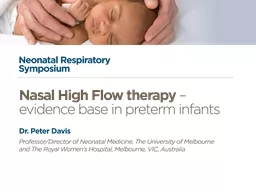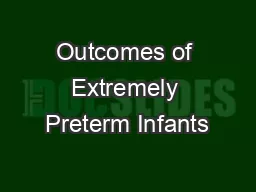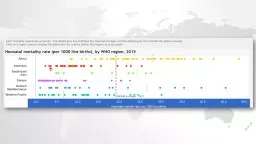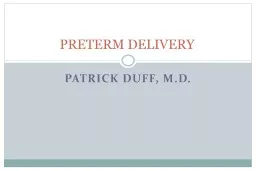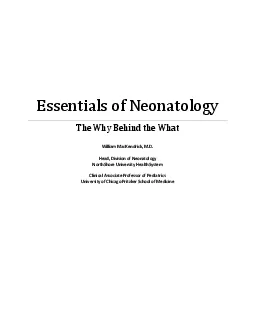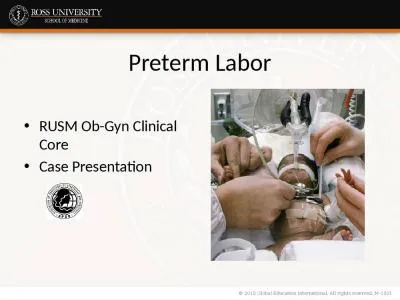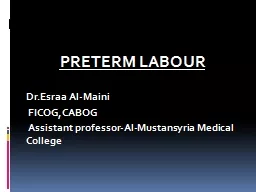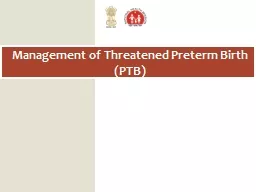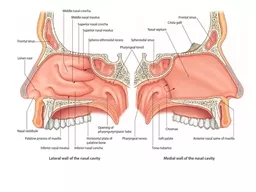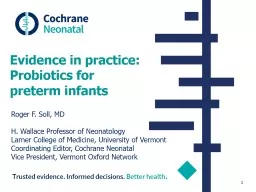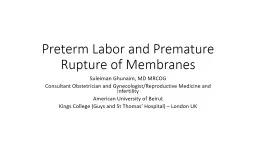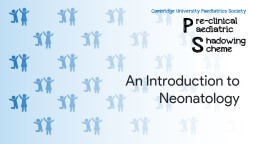PPT-High flow nasal cannulae: Evidence base in preterm infants
Author : pasty-toler | Published Date : 2018-10-22
Peter Davis Melbourne Australia Where does HFNC fit in the spectrum of noninvasive ventilation OR THE FACTS MAAM JUST THE FACTS CPAP The Gold Standard RECOMMENDATION
Presentation Embed Code
Download Presentation
Download Presentation The PPT/PDF document "High flow nasal cannulae: Evidence base ..." is the property of its rightful owner. Permission is granted to download and print the materials on this website for personal, non-commercial use only, and to display it on your personal computer provided you do not modify the materials and that you retain all copyright notices contained in the materials. By downloading content from our website, you accept the terms of this agreement.
High flow nasal cannulae: Evidence base in preterm infants: Transcript
Peter Davis Melbourne Australia Where does HFNC fit in the spectrum of noninvasive ventilation OR THE FACTS MAAM JUST THE FACTS CPAP The Gold Standard RECOMMENDATION CPAP immediately after birth with later selective surfactant administration is an alternative to routine intubation and surfactant administration in preterm infants Level of Evidence 1 Strong Recommendation. Dr. Julian Eason. Chair Neonatology. Corniche Hospital. Abu Dhabi. Corniche. Hospital. 64 bed NICU, 1000 admission/year. High Risk obstetric and Fetal medicine referral . centre. in. UAE. Non-invasive support. Ravi Mangal Patel, MD MSc. Assistant Professor of Pediatrics. Division of Neonatology, Emory University and Children’s Healthcare of Atlanta. rmpatel@emory.edu. @. ravimpatelmd. 2016 Developmental Care Conference. Trends in Infant Mortality in the United States, 2005-2014. NCHS Data brief, No. 279, March 2017. Trends in Infant Mortality in the United States, 2005-2014. NCHS Data brief, No. 279, March 2017. DELIVERY . PRETERM DELIVERY. PRETERM . DELIVERY. OVERVIEW. Etiology. Neonatal complications. Treatment. PRETERM . DELIVERY. Definition - labor prior to 37 weeks. ’. . gestation. Frequency - 12 %. 500,000 preterm births annually. The Why Behind the WhatWilliam MacKendrick MDHead Division of NeonatologyNorthShore University HealthSystemClinical Associate Professor of PediatricsUniversity of Chicago Pritzker School of MedicineCo Case Presentation. Intended Learning . Outcomes. A student should be able to:. Identify the modifiable and non-modifiable risk factors and causes for preterm labor. Describe . the signs and symptoms of preterm labor. Al-. Maini. . FICOG,CABOG. Assistant professor-Al-. Mustansyria. Medical College. . . Preterm . labour. (PTL. ):. is . defined by WHO as the onset of regular uterine contractions associated with cervical effacement and dilatation, between viability and 37 weeks’ gestation, viability of fetus in UK regarded as 24 complete weeks of gestation or birth weight more than 500grams in many developed country . 2. A. t. . t. he. . end. . o. f. . sess. i. on, . t. h. e. . l. ea. r. ne. r. s. . w. il. l be. . ab. l. e. t. o:. . Describe the identification of threatened preterm birth (PTB). E. x. p. l. Opening. Posterior . ethmoidal air cells. Middle Nasal Meatus . Opening. Frontal . sinus . Anterior . ethmoidal air . cell of ethmoid sinus . Maxillary . sinus . Middle . ethmoidal air . cell of . ethmoid sinus . Roger F. Soll, MD. H. Wallace Professor of Neonatology. Larner College of Medicine, University of Vermont. Coordinating Editor, Cochrane Neonatal. Vice President, Vermont Oxford Network. 1. Editorial Team. term. refers to the gestational period from . 37+0 to 41+6 weeks. .. . Preterm births. . is defined by WHO as the onset of regular uterine contractions associated with cervical effacement and dilatation occur between . Suleiman . Ghunaim. , MD MRCOG. Consultant Obstetrician and Gynecologist/Reproductive Medicine and Infertility. American University of Beirut. Kings College (Guys and St Thomas’ Hospital) – London UK. Neonatology is a subspecialty of paediatrics concerned with the care of . newborn. infants. Mostly this covers preterm and low birthweight infants, but also includes congenital abnormalities.. The Neonatal Intensive Care Unit (NICU) at . &. Intact . MembraneS. Dr. . M.Moshfeghi. OBS&GYN. fellowship of . perinatology. Shariati.Hospital. ,TUMS. RUYAN INSTITUTE. INTRODUCTION . . 12% . of births before 37 weeks and preterm..
Download Document
Here is the link to download the presentation.
"High flow nasal cannulae: Evidence base in preterm infants"The content belongs to its owner. You may download and print it for personal use, without modification, and keep all copyright notices. By downloading, you agree to these terms.
Related Documents

